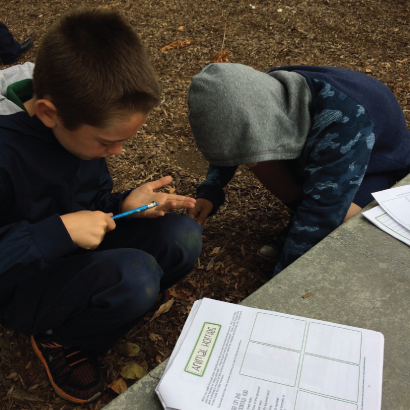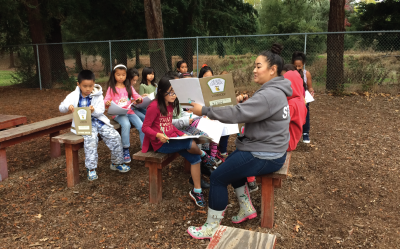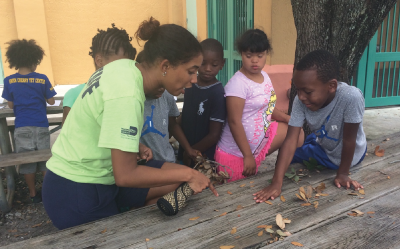
Not having staff with environmental expertise or experience is a real challenge facing park agencies. But we all know that engaging kids in nature is vital for the future sustainability of planet. So NRPA worked with partners to create a truly accessible nature program that addresses some of these key barriers – Wildlife Explorers was born.
To get more background on the program, we did a Q&A with NRPA’s Director of Conservation Lori Robertson.
Who is Wildlife Explorers for? What experience is needed to implement the program?
Wildlife Explorers was created with park and recreation agencies in mind, specifically park staff providing out-of-school time programming to youth in urban communities. But really, Wildlife Explorers is a tool that can be used by any adult looking for fun and easy ways to connect kids to nature whether in a park, school or home setting.
Because Wildlife Explorers requires zero prior experience facilitating nature or environmental education programming, it can be implemented by anyone.
What ages is this program appropriate for?
We recommend Wildlife Explorers for children anywhere between the ages of 5 and 10. One great thing about the curriculum is that it can be modified to fit the needs of the particular student/s you are working with. Younger students can replace writing sections with drawing activities, facilitators can read chapter intros together as group, and older students can enhance the activities with additional research. We see the curriculum as a framework and encourage each participant to make the program their own depending on their needs.
Why did NRPA create this resource?
It’s no secret that America’s children are increasingly disconnected to the natural world. In fact most kids spend less than 30 minutes a day in unstructured outdoor play. At NRPA, we recognize the powerful role that local parks can play in reversing that trend.
Each day park and recreation agencies throughout the country provide out-of-school time programming and services to millions of kids. By leveraging this existing programming and the public outdoor space that parks provide, NRPA hopes to reach kids who might not otherwise be provided opportunities to connect with the natural world.
Fact is if the next generation is to become one of informed environmental advocates, we need to get kids outside and exploring. And there is no better or more accessible place for that to happen than in a local park.

Program leader in San Jose discusses the weather activity in the Wildlife Explorers workbook
How is it different from others that are out there?
Unlike most environmental education programs, Wildlife Explorers is focused on exploration and observation – not environmental literacy. The goal of the program is simply to get kids comfortable with spending time outdoors. Sure, we hope kids will learn a few things about the natural world along the way, but the focus is on creating positive outdoor experiences that lead to enhanced awareness and comfort outside.
Plus there are no tests and no homework – something we think kids will like.
What is your favorite activity and why?
I love Chapter 2 Exploring Essentials, especially the Wake Up Your Ears activity. It’s rare that kids (or even adults) are given time to just sit and listen and this can be a very powerful thing. Even if they aren’t able to hear much more than the hum of the urban world around them, sitting in silence and learning to be reflective is a skill many of us are in need of in today’s modern world. I also think this chapter helps kids to understand that nature is everywhere and is not just a faraway place full of mountains and grizzly bears. As kids start to make the connection that their community is full of nature too, I believe they will intuitively start to value nature more.

Students in Miami explore leaves that have fallen from a tree

